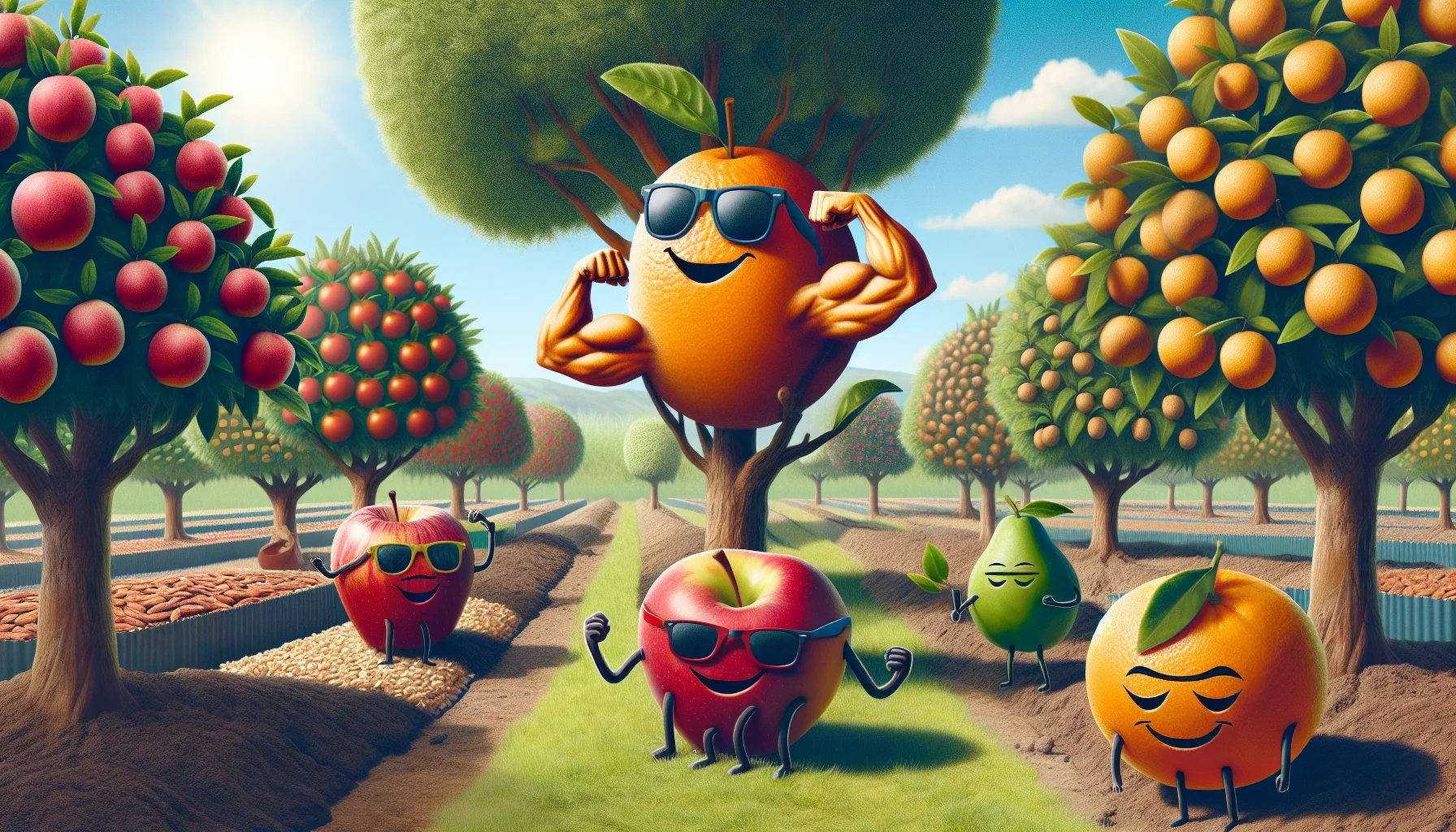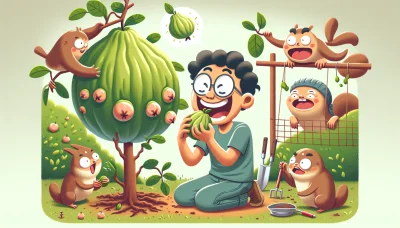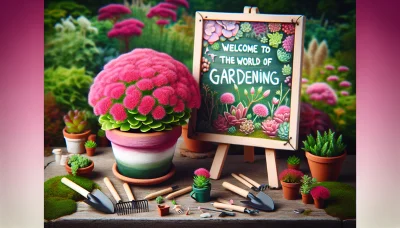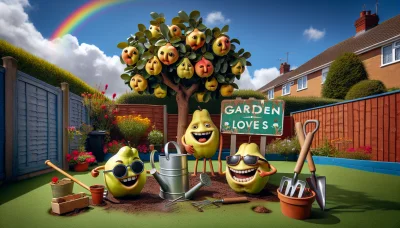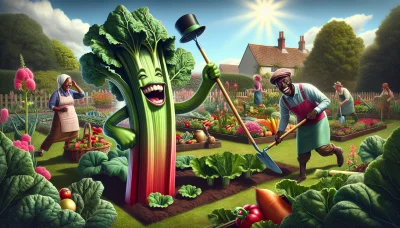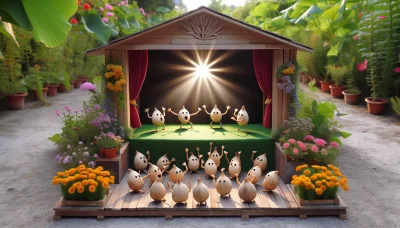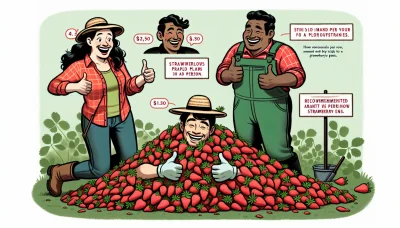Things that grow on trees Quiz
Test Your Knowledge
Question of
Things That Grow on Trees: A Gardener's Guide
Trees are an essential component of both our gardens and ecosystems at large, serving as more than just landscape beautification elements. They play a critical role in maintaining the balance of our environment by purifying the air, offering shade, and providing habitats for numerous species of wildlife. Beyond their ecological benefits, trees are also incredibly versatile in what they can produce. From the fruits that grace our tables, to the nuts that provide essential nutrients, and even the sap that can be transformed into syrup, trees are a cornerstone of both human and animal life. This guide will explore the myriad of things that can grow on trees, shedding light on the often overlooked variety and utility these magnificent plants offer to gardeners and nature enthusiasts alike.
Fruits: Nature's Sweet Bounty
- Apples
- Oranges
- Cherries
- Peaches
- Pears
- Plums
Fruit trees play a crucial role in both home gardens and commercial agriculture, providing not only delicious and nutritious produce but also contributing to biodiversity, environmental health, and the beauty of the landscape. In home gardens, fruit trees can offer fresh produce right at your doorstep, while in commercial agriculture, they are a vital source of income for many farmers around the world. Beyond their economic value, fruit trees help in carbon sequestration, improve air quality, and support a wide range of wildlife, making them invaluable assets to our planet.
Nuts: The Hidden Treasures of Trees
- Almonds
- Walnuts
- Pecans
- Cashews
- Hazelnuts
- Pistachios
- Brazil nuts
Nuts are not only a delicious and versatile food but also packed with numerous health benefits. They are rich in essential nutrients, including healthy fats, protein, vitamins, and minerals. Consuming nuts as part of a balanced diet can help reduce the risk of various health issues, such as heart disease, diabetes, and obesity. Additionally, nuts play a significant role in environmental sustainability. Trees that produce nuts contribute to carbon sequestration, improve soil health, and support biodiversity. By choosing nuts as a snack or ingredient, we not only nourish our bodies but also contribute to the health of our planet.
Flowers and Blossoms: The Aesthetic Appeal of Trees
Flowering trees play a pivotal role in enhancing the beauty and diversity of landscapes and gardens. Their vibrant blossoms and unique floral arrangements not only contribute to the visual appeal but also support local ecosystems by attracting pollinators. The presence of these trees can transform any space, adding color, fragrance, and life, thereby creating serene and picturesque settings that captivate the senses and soothe the soul.
- Cherry Blossoms
- Magnolias
- Dogwoods
Medicinal and Herbal Trees: Nature's Pharmacy
Trees have been an essential part of traditional medicine for thousands of years. With their vast array of health benefits, they are considered nature's pharmacy. These natural giants provide us with crucial ingredients for many medicinal and herbal remedies. From their leaves and bark to their sap and fruit, every part of these trees can be utilized to promote health and well-being.
- Neem - Known for its antibacterial, antifungal, and anti-inflammatory properties.
- Eucalyptus - Widely used for its respiratory benefits, especially in treating colds and congestion.
- Willow - The bark of the willow tree contains salicin, a precursor to aspirin, making it effective for pain relief and reducing inflammation.
Timber and Wood: Building and Crafting Materials
Trees are an indispensable resource for timber and wood, serving as the backbone for various industries. They are crucial in construction, furniture making, and crafts, providing both structural and aesthetic value. The importance of trees extends beyond their practical applications, as they also play a significant role in the environment by producing oxygen, supporting wildlife, and contributing to the natural beauty of our landscapes. The selection of wood from different trees can greatly influence the quality, durability, and appearance of the final product, making the choice of wood a critical decision in any project.
- Oak
- Pine
- Teak
- Maple
- Cherry
- Birch
- Walnut
- Mahogany
Conservation and Care: Ensuring Our Trees Thrive
Tree conservation is a crucial aspect of maintaining our planet's health and biodiversity. Trees not only provide oxygen but also homes for countless species, stabilize the soil, and combat climate change by absorbing carbon dioxide. Proper care and maintenance are essential for the health of trees, which includes regular watering, mulching, pruning, and protecting them from pests and diseases. Gardening plays a significant role in supporting tree growth and health. It involves selecting the right species for the local climate, ensuring they are planted in a suitable location where they have enough room to grow, and providing them with the nutrients they need to thrive. To plant and maintain healthy trees, it's important to research the specific needs of the species you're planting, water them deeply but infrequently to encourage strong root growth, and apply mulch to retain moisture and regulate soil temperature. By following these tips and committing to the conservation and care of our trees, we can ensure they continue to thrive for generations to come.
